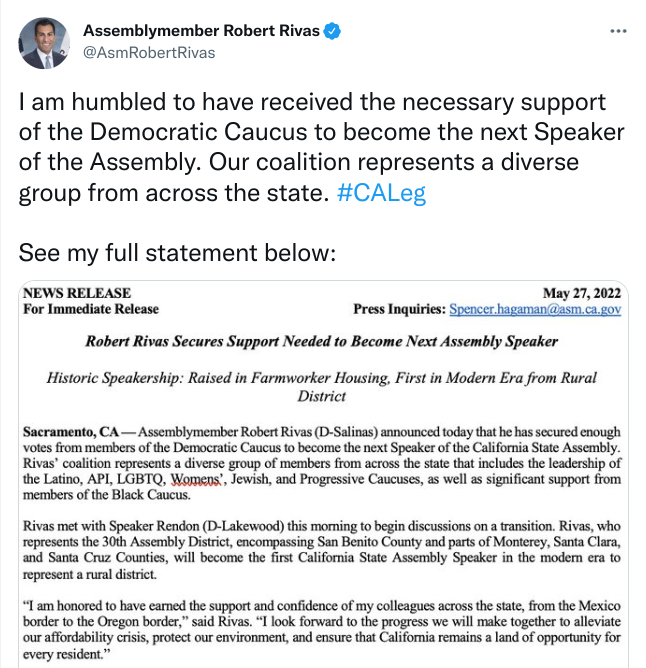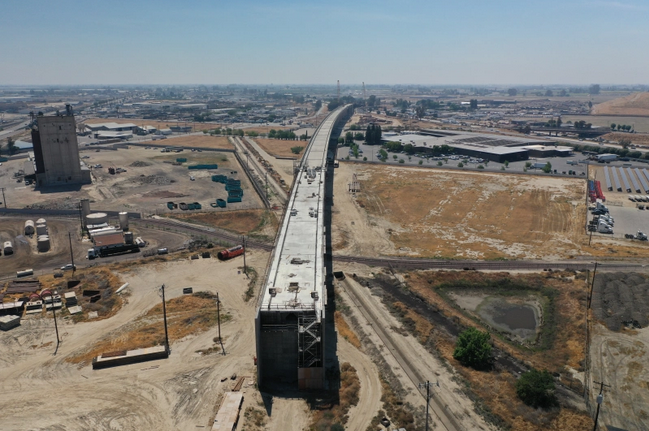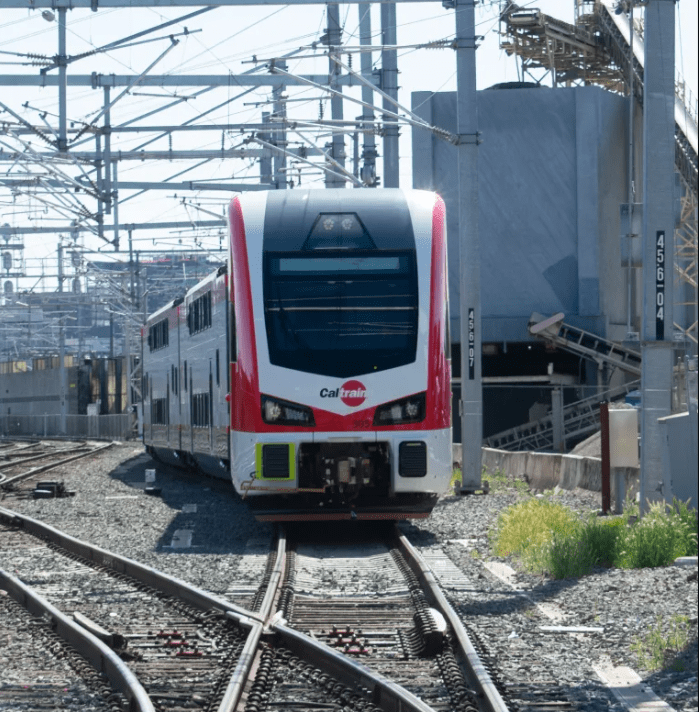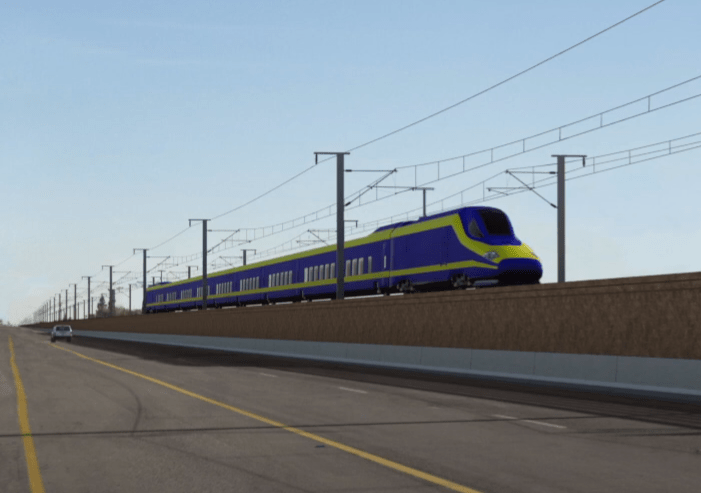Update: June 1, Rendon will remain as speaker for "at least the rest of the legislative session."
Assemblymember Robert Rivas (D-Salinas) announced on Friday, just before the Memorial Day weekend, that he had the votes to replace Anthony Rendon (D-Lakewood) as Speaker of the California Assembly. The impact on California's rail modernization drive, which Rendon has blocked, is not entirely clear. But a Rivas speakership could bode well for California High-Speed Rail.

As pointed out by the Chronicle and other papers, it's unclear if Rendon will go quietly. But since he terms out in 2024, it's certainly in Rivas's interest to get a jump on the position.
As previously reported, Rendon has led the charge to block $4.2 billion in voter-approved, Prop. 1A bullet-train funds from being appropriated. These funds are crucial for laying tracks and stringing electrification for the over 100 miles of right-of-way, bridges, and other works currently under construction in the Central Valley. Rendon's justifications for blocking these funds have changed again and again.

In Streetsblog's view, it would be difficult to find a Democrat worse than Rendon when it comes to modernizing California's rail system. Speaker Rendon is a gaslighting politician who flew to the climate change conference in Scotland to complain about how California is failing to lead in reducing fossil fuel use, at the same time he has repeatedly attempted to prevent the electrification of the state's rail system. He also appointed Assemblymember Laura Friedman to chair the Transportation Committee, where she has also blocked electrification and backed the continued use of polluting diesel trains in the Central Valley.

Streetsblog has reached out to Rivas's staff to ask where he stands on high-speed rail and will update this post if they reply. Officially, the most recent release from Rivas expresses support, albeit generally, for the Governor's May budget revision, which includes the $4.2 billion for the project.

But to engage in some informed speculation, Rivas's district includes Morgan Hill and Gilroy, both on the high-speed rail alignment between the Central Valley and San Jose. As seen in the above image, that means his district stands to gain directly, in the nearer term, from California's rail modernization project. And electrification is already well underway between San Jose and San Francisco, with over $700 million funded from HSR. Rivas's constituents would benefit from high-speed connections and jobs generated by the project in the next phase, which would link San Jose to Merced.
Meanwhile, in Washington, the push continues to lock down funds for "true high-speed rail" projects (only California's project qualifies as a true high-speed rail project that's actually under construction). "A group of 75 lawmakers—including 65 House members led by Representatives Jim Costa, Seth Moulton, and Suzan DelBene, and 10 Senators led by Senator Jon Ossoff—are urging Congressional appropriators to allocate $3.5 billion for high-speed rail corridor development in the FY2023 budget," reads a recent letter from federal lawmakers, including California's U.S. Senators Padilla and Feinstein, in support of funding. The California High-Speed Rail Authority has submitted two applications totaling $1.3 billion for federal grant funding from the Bipartisan Infrastructure Law, signed by President Biden in November. These monies would go a long way in complementing the $4.2 billion in state funds, if released, and would allow California to start running the nation's first 200-mph-plus trains.






